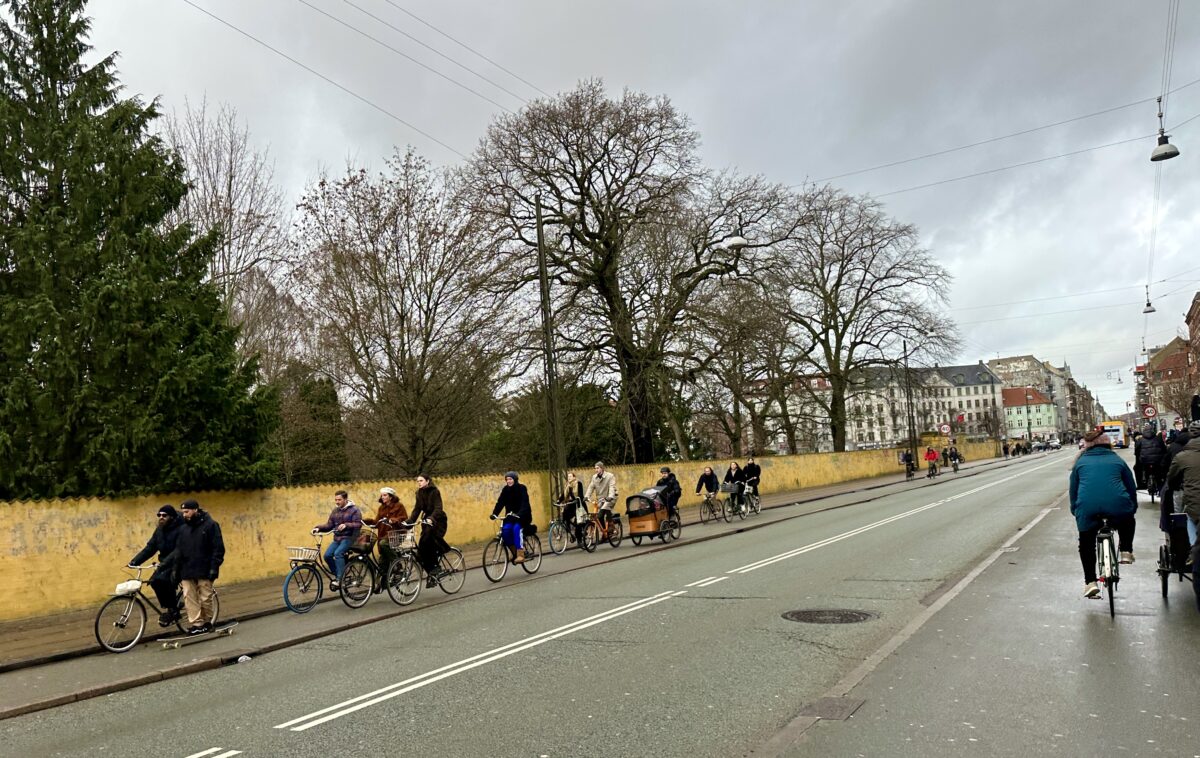
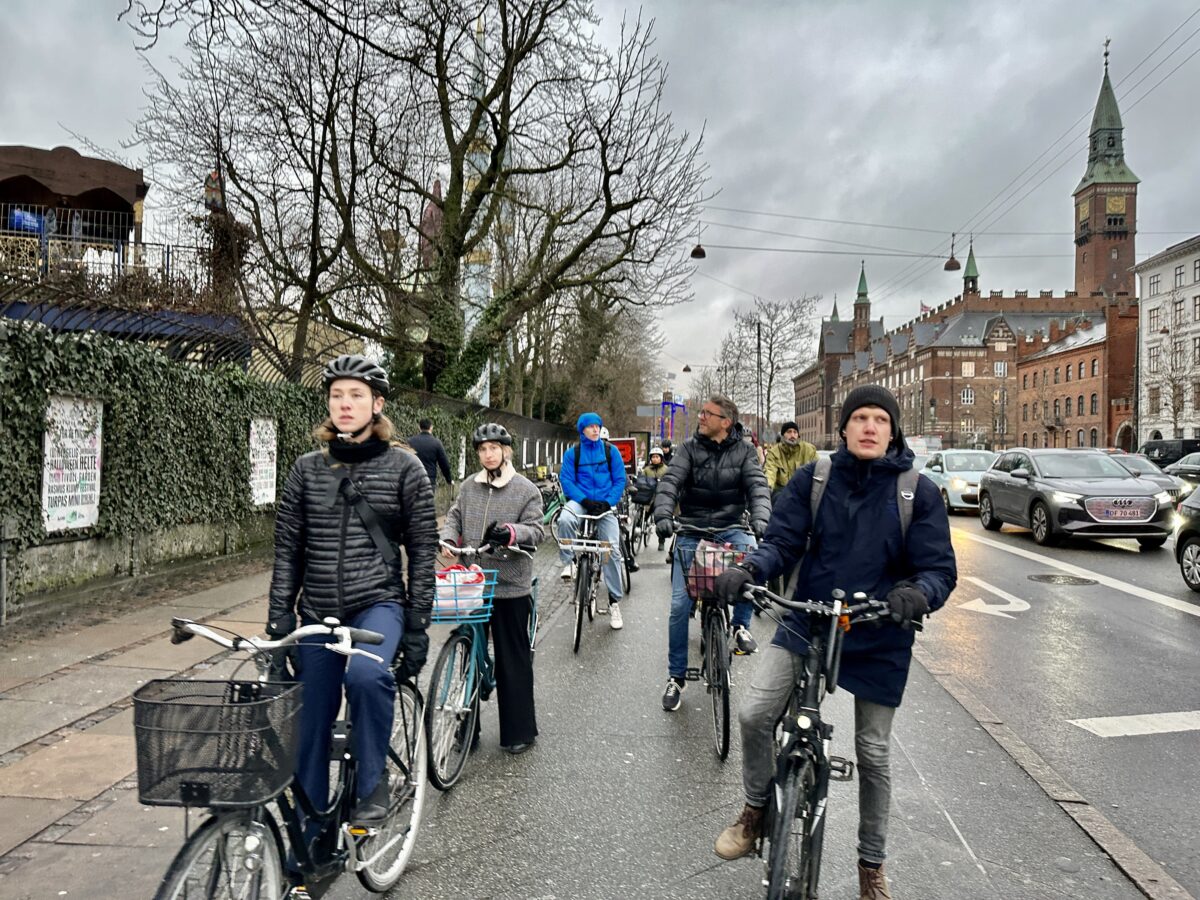
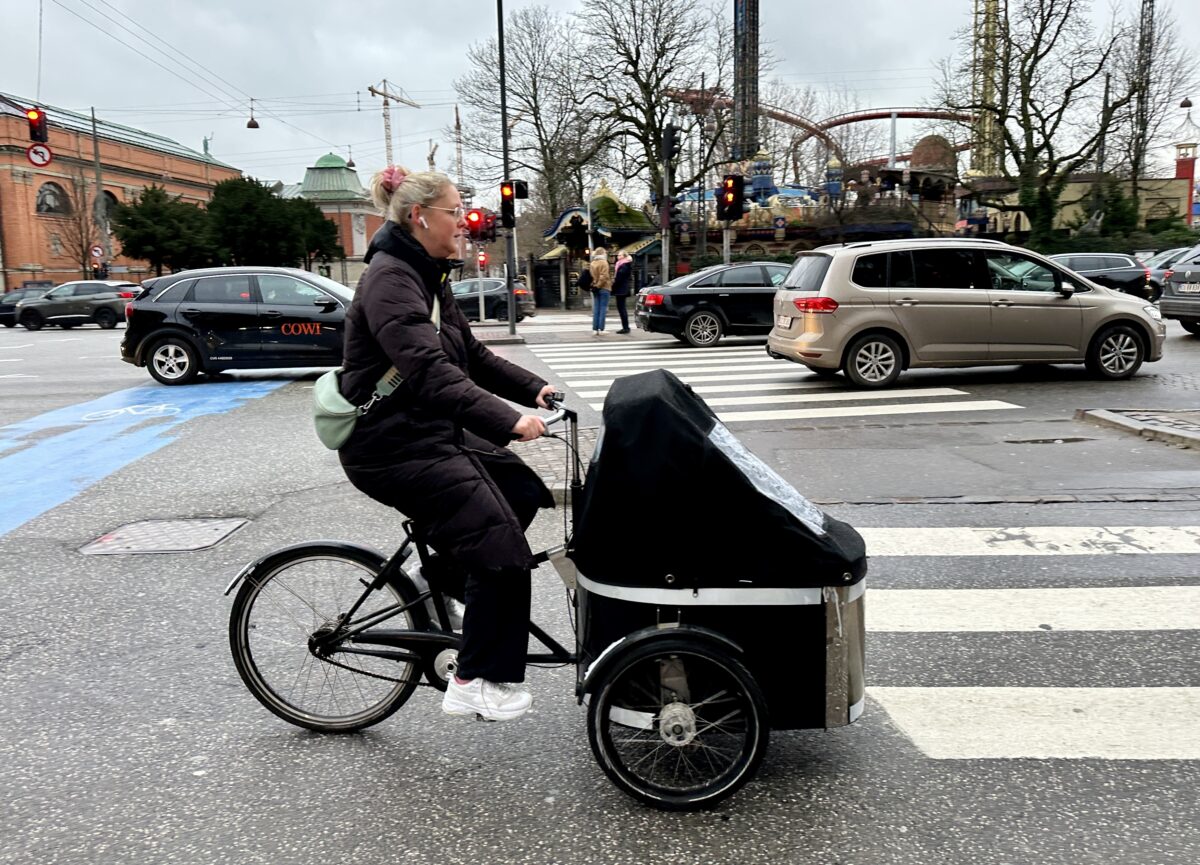
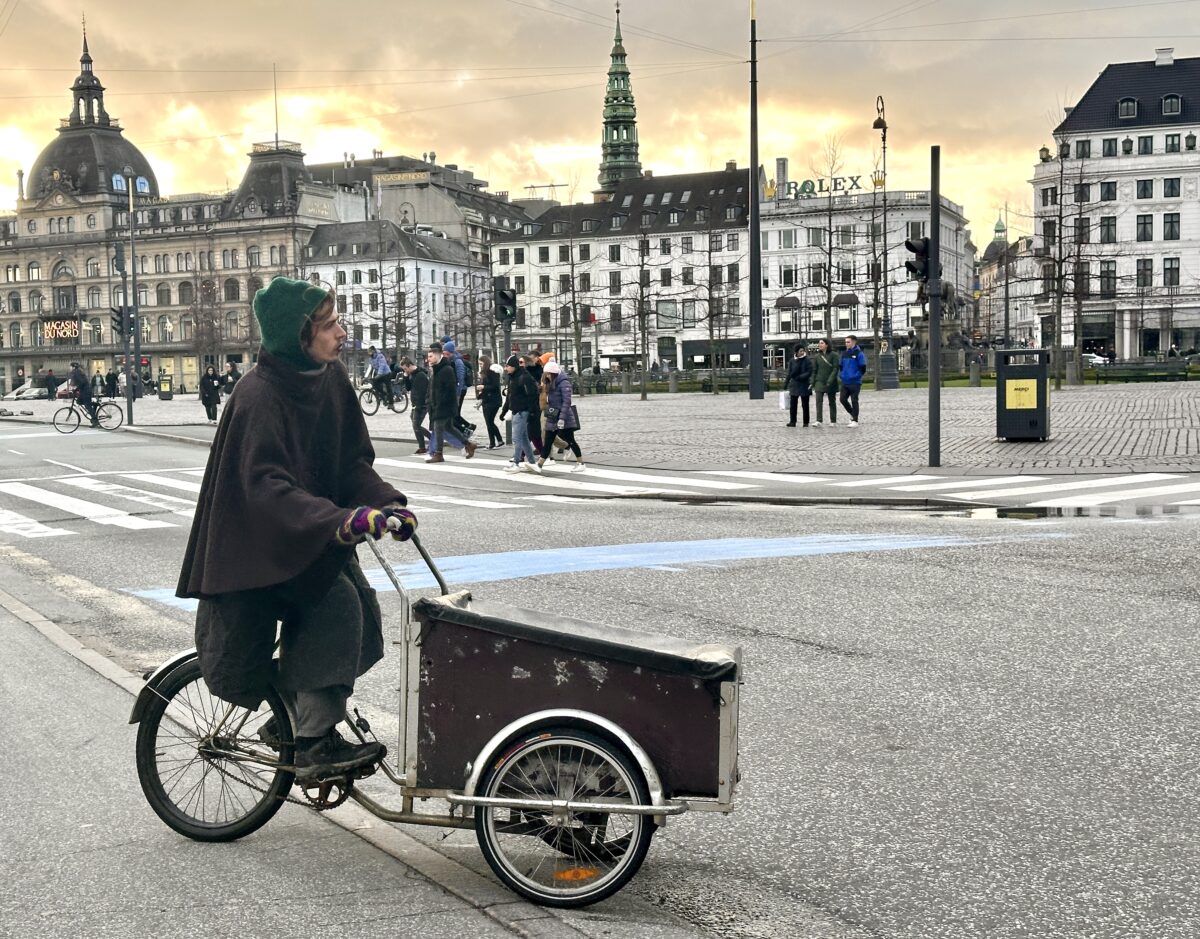
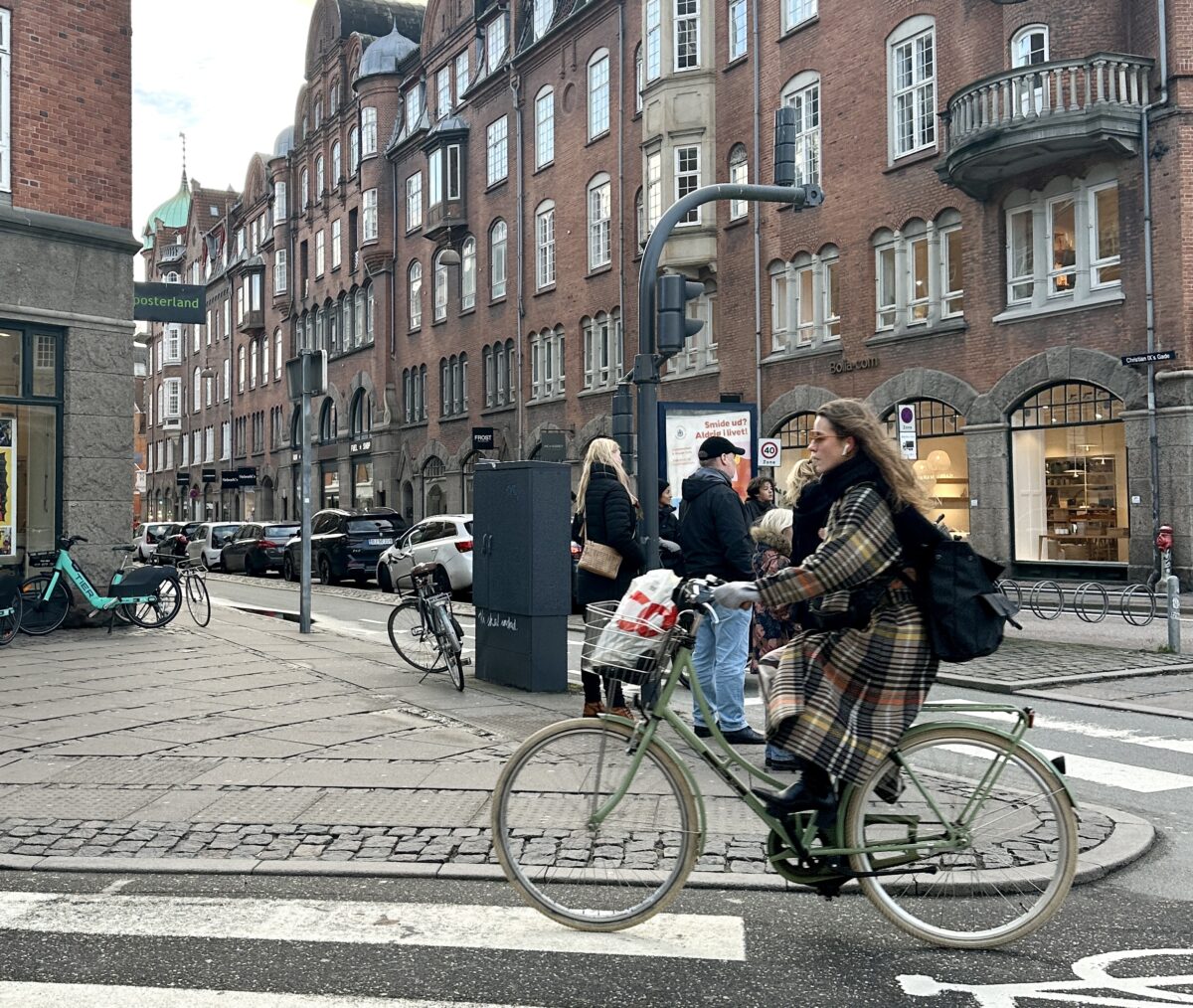
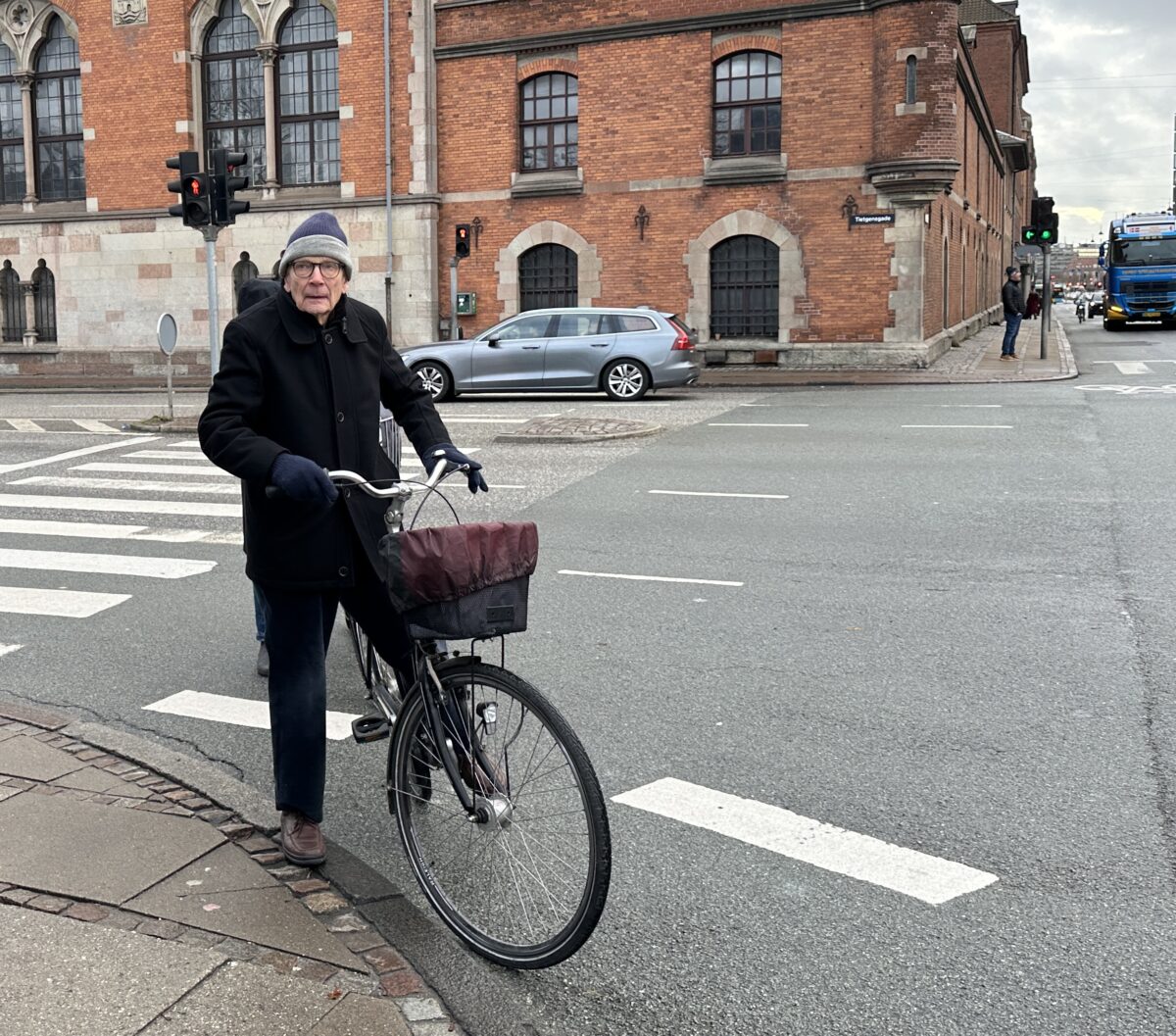
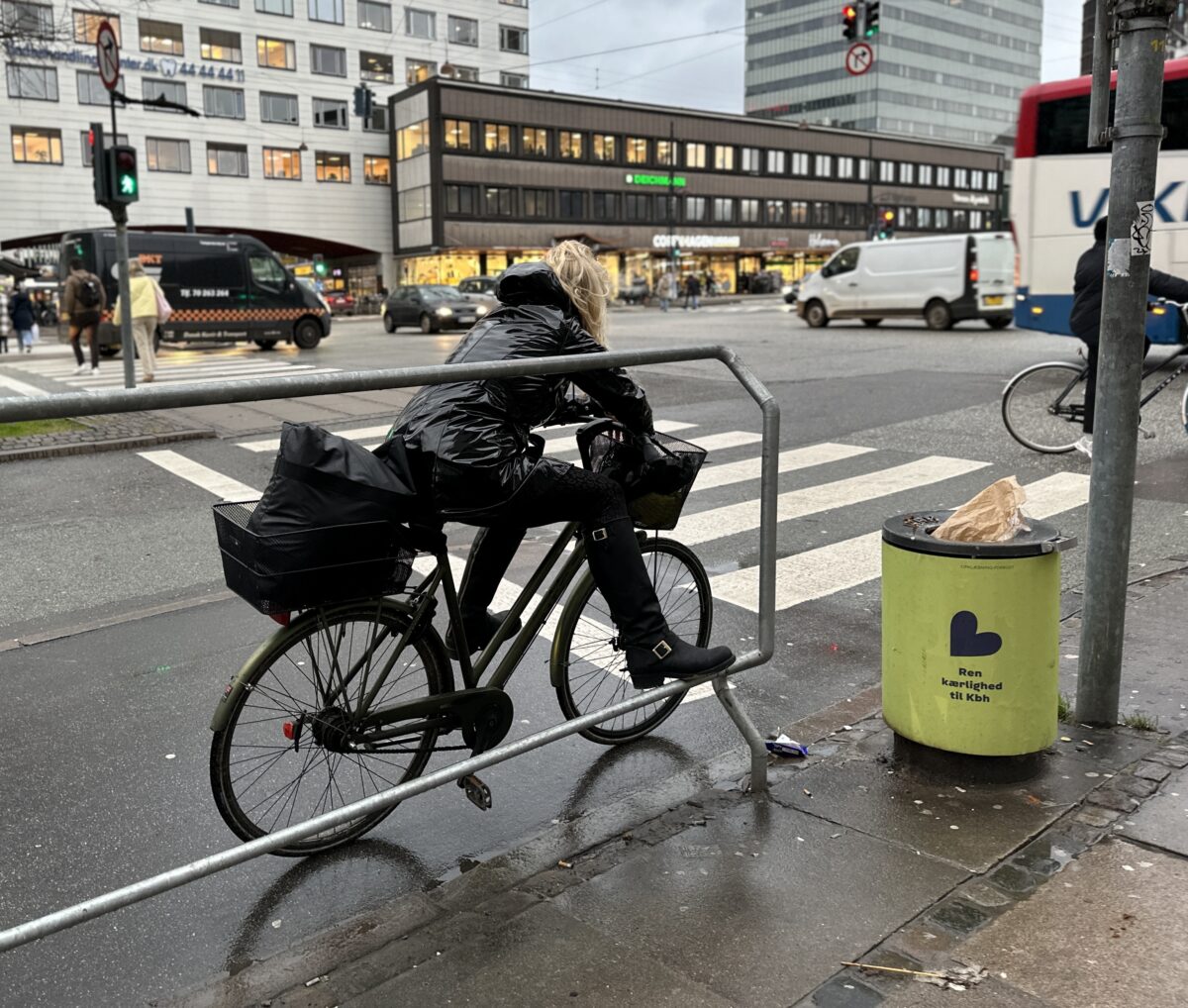
— This post is part of BikePortland Staff Writer Taylor Griggs’ trip through Europe. See previous dispatches here.
If there was a World Cup for bike infrastructure, the Dutch and Danish would probably be at the center duking it out for the prize of most renowned capital city. Amsterdam or Copenhagen: which is the better choice for cities in the United States to use for infrastructure inspiration?
Well, I don’t know. (And maybe it doesn’t matter?) But I did just spend a (cold and wet) weekend there, and while I haven’t solved this great urbanist debate, I had a very nice time exploring the city. Copenhagen may have even more impressive parks and playgrounds than I saw in Amsterdam — for kids and adults alike — and in some ways, I think it offers a pretty realistic pattern for Portland to use to change our most car-dominant streets into something people would feel good biking on.
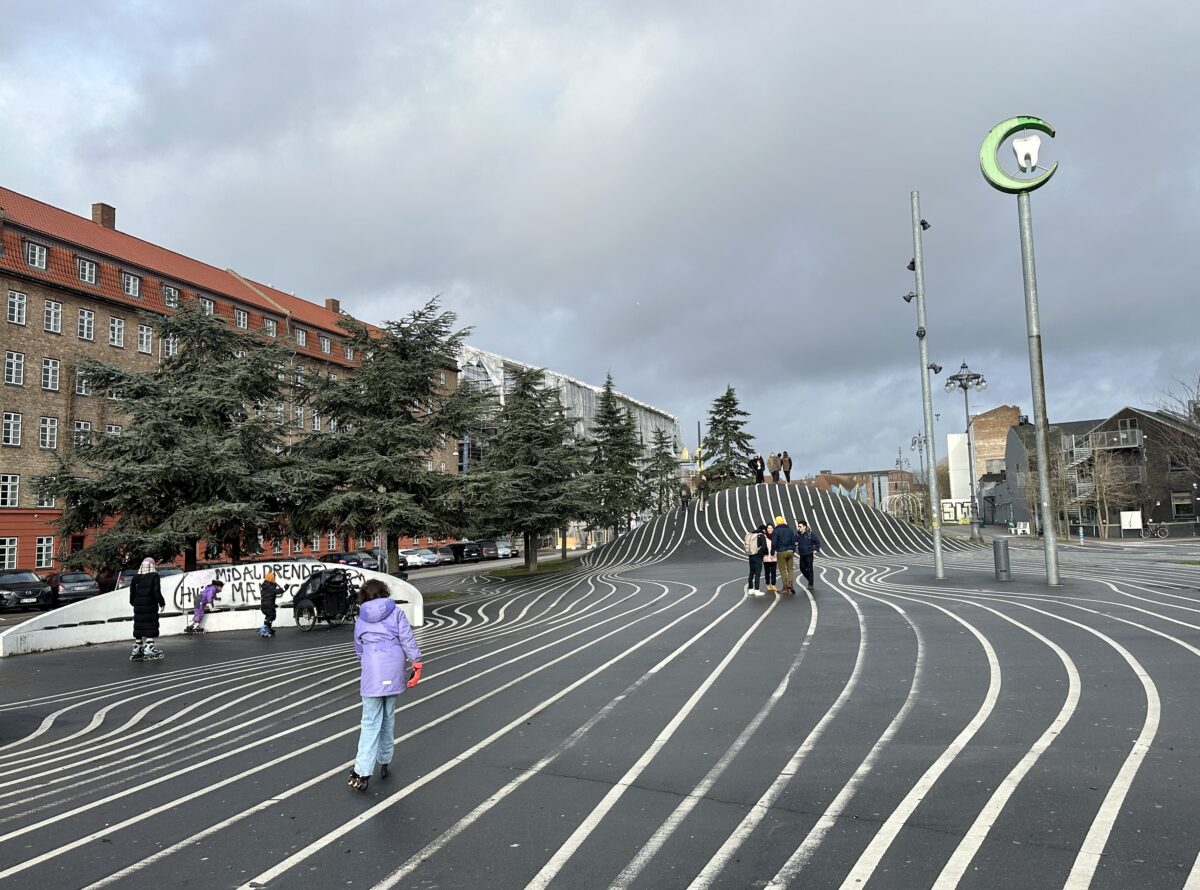
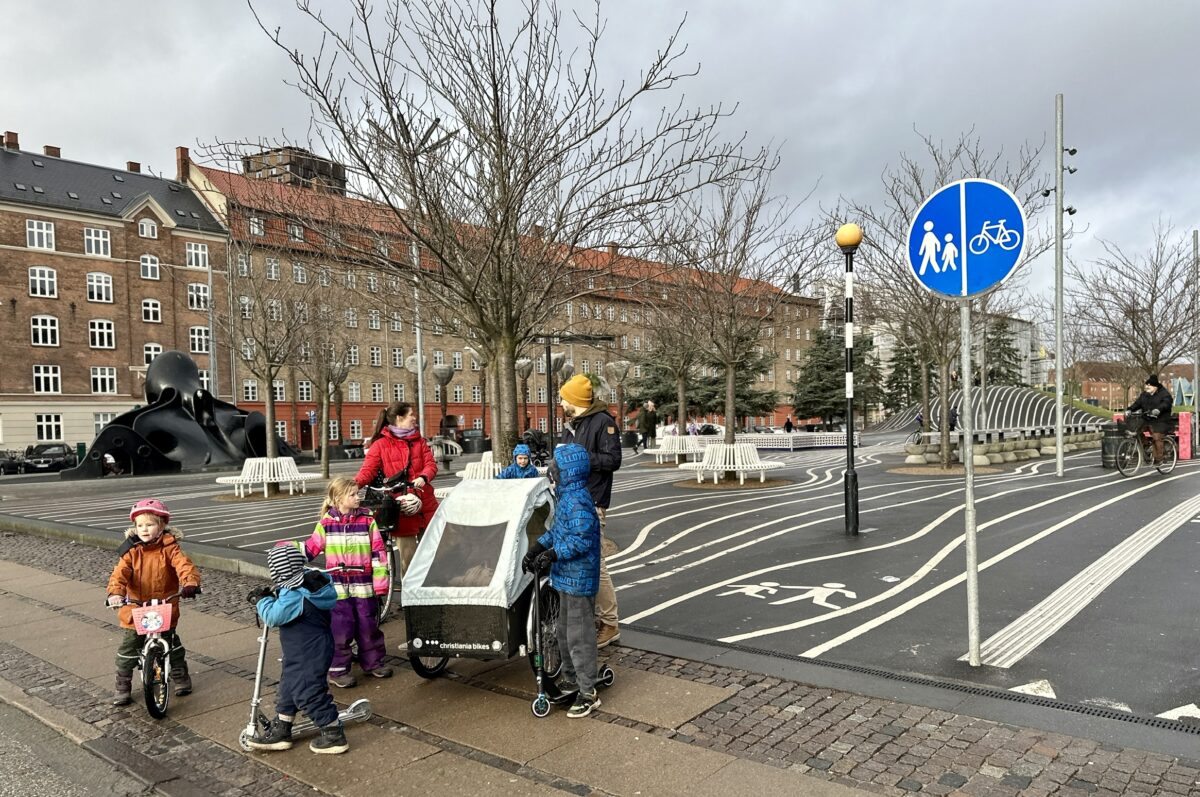
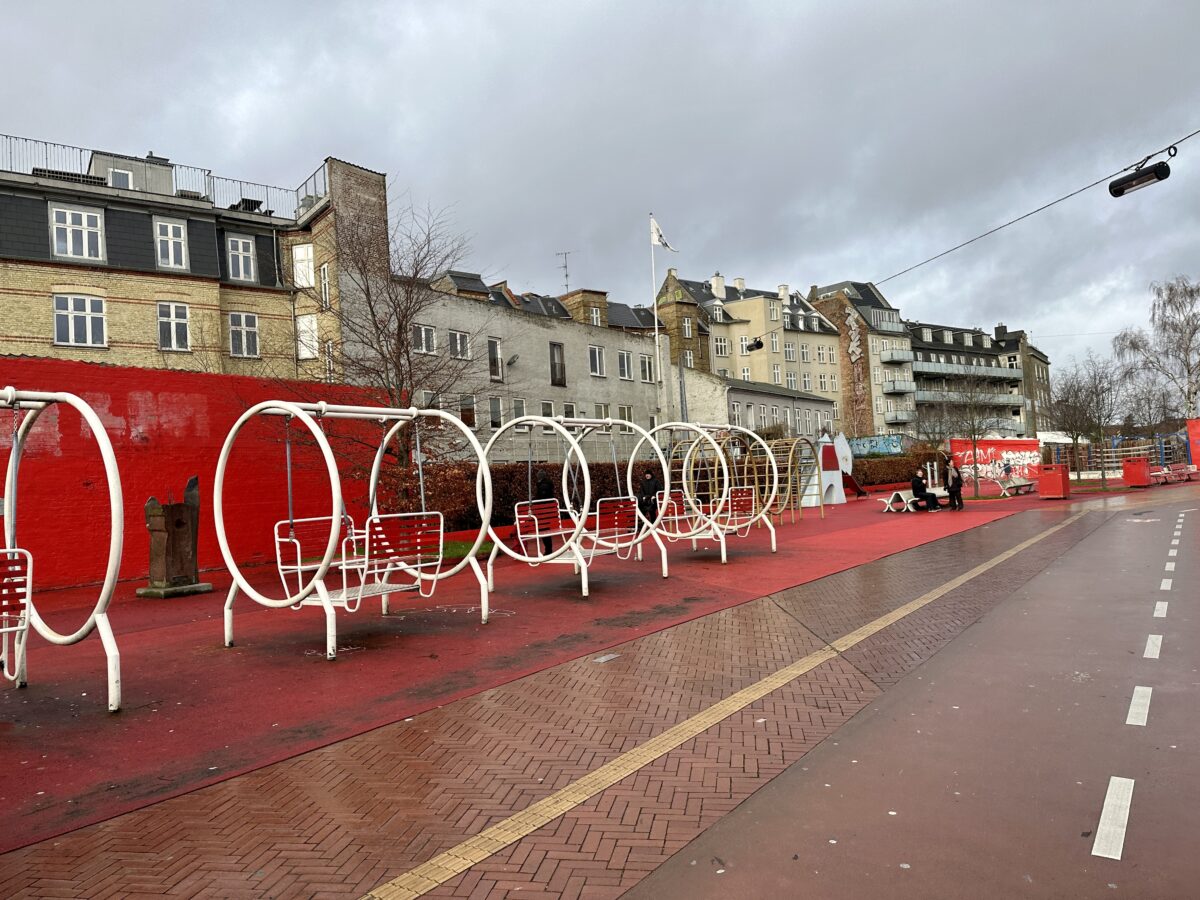
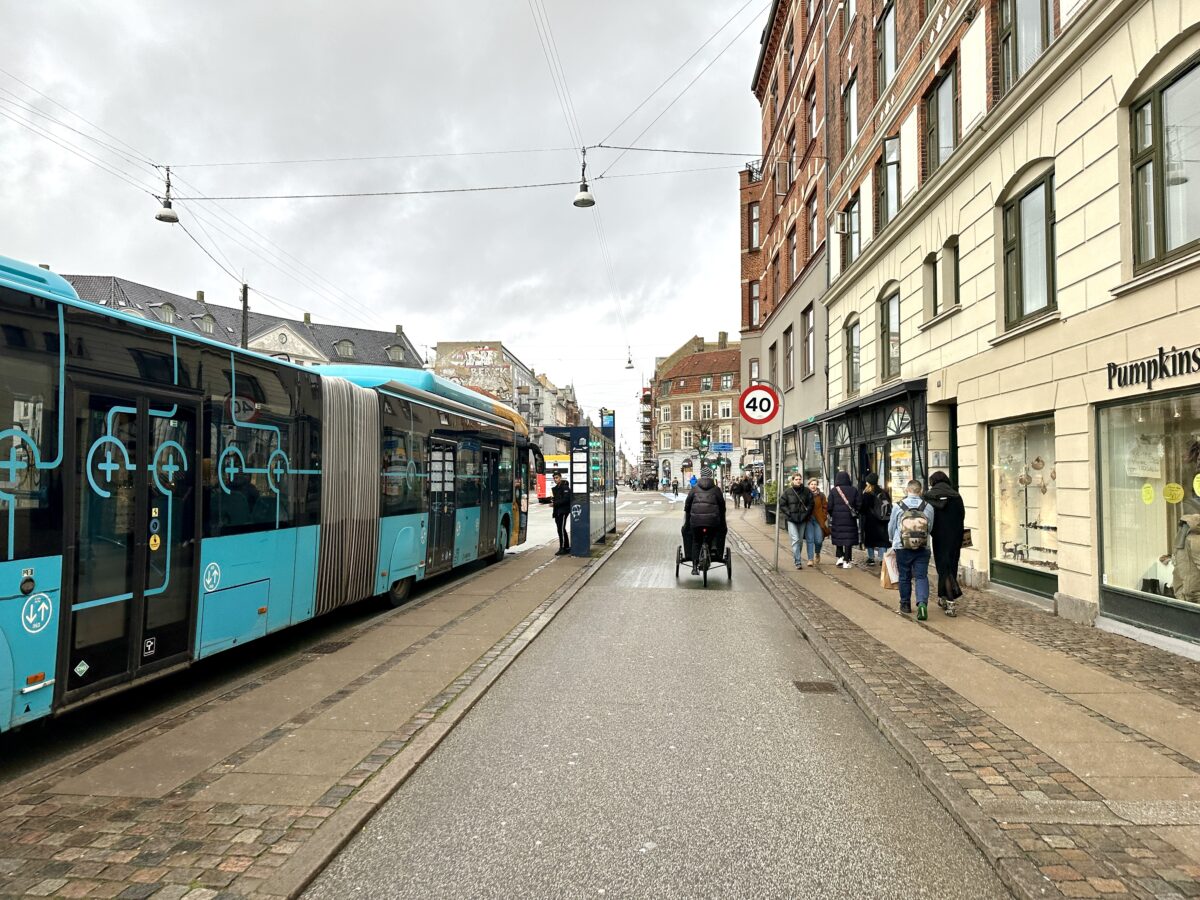
The main thing I really liked about biking in Copenhagen were the grade-separated bike lanes. These are not common in Portland outside of some shared bike and pedestrian paths, and I found them very helpful both while I was biking and walking. The bike lanes are paved and smooth while pedestrians are expected to use adjacent cobblestone paths. I think this separation helps people walking feel secure in a way they may not in Amsterdam. At least, I didn’t witness (or partake in) any modal conflict in Copenhagen like I did in Amsterdam.
These grade-separated bike lanes are very common in Copenhagen, present on pretty much every major thoroughfare you’d use to get through the city. There are other bikeways — called “cycle superhighways” — you can use as shortcuts for traveling longer distances.
Compared to Amsterdam and Utrecht, there are some very wide streets and intersections full of car traffic in Copenhagen. The city can fit big, American-style streets full of multiple lanes of car traffic that aren’t feasible along the canals in The Netherlands.
But unlike along most of Portland’s large streets, there are safe biking facilities on all of Copenhagen’s arterials. It’s like if Portland had Better Naito Forever-style bikeways on every single major street in the city, from Powell Blvd to 82nd Ave to Lombard St, plus several more Springwater Corridor-type paths running throughout the city and the metro area.
So now that I’ve seen and experienced both Amsterdam and Copenhagen — perhaps the two major cities providing the most inspiration to urbanists all over North America — did they live up to the hype? Absolutely! These are both beautiful places full of rich history and especially wonderful opportunities for people who love to bike.
But as I continue my journey and see more types of bike and transportation infrastructure, I think it’s important to point out that these cities are more than just snapshots of fantasy bike lanes. They have their quirks and problems like anywhere else, and they have planners who discuss what works best for their individual populations.
We should take from them the ideas that are relevant and useful in order to make biking in Portland the best it can be, but just like the European “bike cities” are different, we’ll never be able to copy their designs exactly — and I think that’s a good thing. Variety is the spice of life! (But only after we’ve achieved Dutch or Danish mode share, please.)



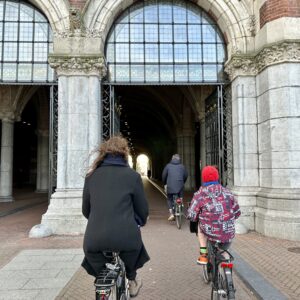

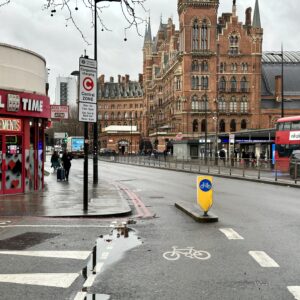
Thanks for reading.
BikePortland has served this community with independent community journalism since 2005. We rely on subscriptions from readers like you to survive. Your financial support is vital in keeping this valuable resource alive and well.
Please subscribe today to strengthen and expand our work.
How do people who need mobility devices (wheelchairs, scooters, walkers, etc) cope with the cobblestones? Seems as though they would still need to use the bike lanes. Or were you saying that cobblestones are used as pavement markers to separate the asphalt lanes allocated to cyclists and peds?
Thanks for the update, Taylor! One other design feature utilized in Copenhagen that was also considered for the 13th Ave. bikeway in Eugene is the “green wave”, which is a series of traffic lights that are synced together to provide continuous passage for cyclists along popular commuting routes (one direction in the morning, and the opposite direction in the evening).